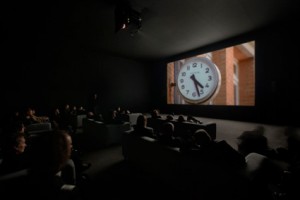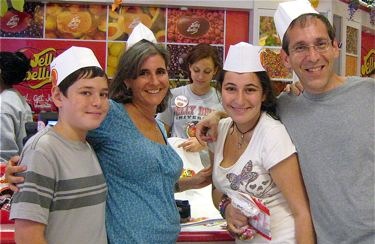 One of the highlights of the local summer scene, the Israel Wine Festival, is celebrating its 10th anniversary this year. My wife and I – along with many thousands of visitors from around the country – anxiously watch the clock waiting for the week when we can descend upon the Israel Museum in Jerusalem to sample some of Israel’s best wines, from well known and boutique vintners, plus chocolate liqueur makers, hard cider brewers, and off-beat delights like spiced salts from the Dead Sea.
One of the highlights of the local summer scene, the Israel Wine Festival, is celebrating its 10th anniversary this year. My wife and I – along with many thousands of visitors from around the country – anxiously watch the clock waiting for the week when we can descend upon the Israel Museum in Jerusalem to sample some of Israel’s best wines, from well known and boutique vintners, plus chocolate liqueur makers, hard cider brewers, and off-beat delights like spiced salts from the Dead Sea.
This year, we watched the clock a little too hard and almost missed the main event. That’s because on Tuesdays, entrance to the Wine Festival also includes two free hours at the Israel Museum itself, which is featuring the triumphal return of Christian Marclay’s award winning art installation, “The Clock.â€
“The Clock†is a spellbinding tour de force. Essentially a movie that plays for 24 hours continuously, the piece consists of thousands of short film clips, all containing images of clocks and watches, or references to time, edited together briskly into a movie. Each clip refers to a specific time (it might say 2:42 PM on someone’s digital watch, for example); that time corresponds to the actual time in Jerusalem. Although the museum is only open for some of the movie’s hours, on August 28 and September 24, the exhibition space where “The Clock†is playing will stay unlocked all night for those who can’t tear themselves away.
“The Clock†first played at The Israel Museum in 2011; it was in the space where the acclaimed Herod exhibit is now. In its newest incarnation, “The Clock†has a seating area of about half the size of its first run – there’s room for about 50 people on comfy 3-person white couches spread about in a dark space – but when we went this week, there was space for everyone.
While watching “The Clock,†you can’t help but ask: How did Marclay do it? How did he find all of those clips, each with a clock, each showing a specific time? Did Marclay and his staff watch each one of those thousands of movies? Did they watch every movie ever made? How long did it take? Did they ever watch the entire production end-to-end?
The mix of film clips is equally impressive, zipping seamlessly from 1930s black and white to modern drama and comedy. Robert Redford was a recurring image during both our brief encounters. There were scenes of London’s Big Ben repeatedly chiming on the hour, a gagged and bound man watching the timer on a bomb countdown, clips which started out with nothing connected with time when, suddenly, the camera would pan up to show a clock on the wall displaying the appropriate hour.
Marclay uses actual and inserted music to tie the images together; to build tension and release. There are explosions and love scenes, in English, Japanese, French, German and many more language we didn’t hear but were probably coming up once the museum was closed. The result is not only a meditation on the specific times shown via the clocks on screen, but also about how time has changed the craft of movie making.
It was also an opportunity for intense “people watching.†With so many clips, we felt like voyeurs into a thousand bedrooms, boardrooms, bomb scares and telephone booths. Indeed, telephones, bombs, guns and diabolical doings were repeated themes (Vincent Price was another recurring character).
“The Clock†premiered in London in October, 2010, and has since been presented in New York, Los Angeles, Venice, and Moscow. Marclay won the Golden Lion award at the 2011Venice Biennale, where “The Clock†was featured as the show’s central exhibition.
When we eventually did tear ourselves away from the darkened theater – after nearly two mesmerizing hours – the Wine Festival lived up to its merry making reputation, with much socializing and even dancing to a live band, which made the transition from soft jazz in the festival’s first years to bawdy rock and roll last year. We bought a couple of bottles of Teperberg Sangiovese reds, which were at a Rosh Hashana friendly price of only NIS 40 per bottle, and a bottle of “smoked†salt at the “Salt 424†booth (so named because the salt is mined from 424 meters below sea level).
The Wine Festival is already done for 2013, but “The Clock†keeps ticking until October 19. Don’t let time run out on you.
This blog post appeared originally on The Times of Israel.

